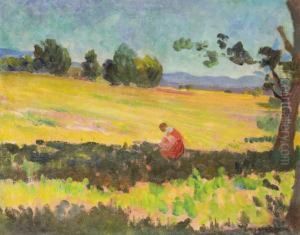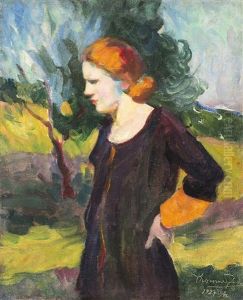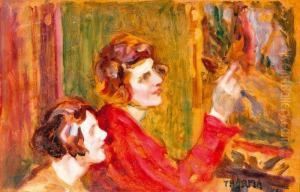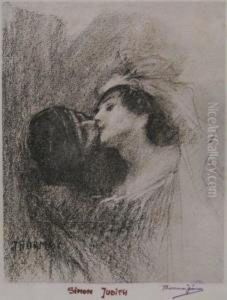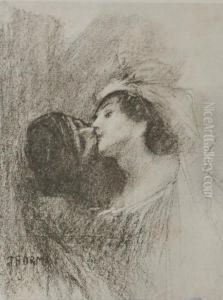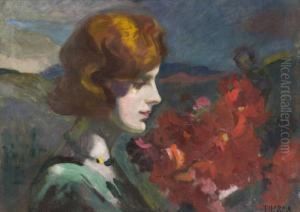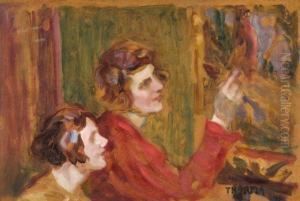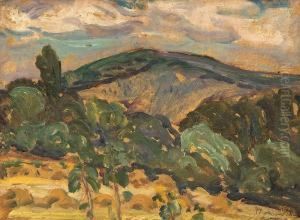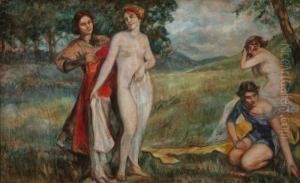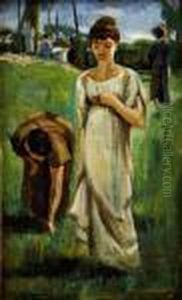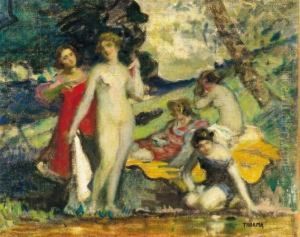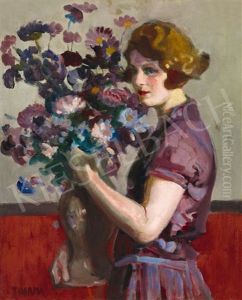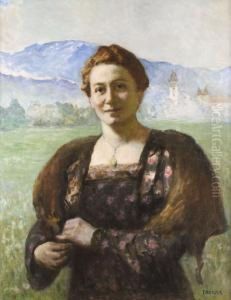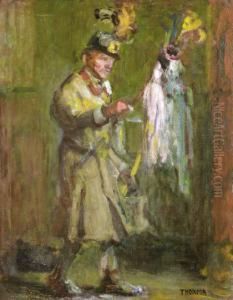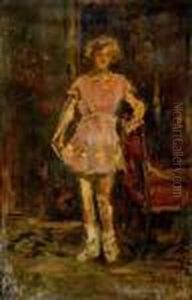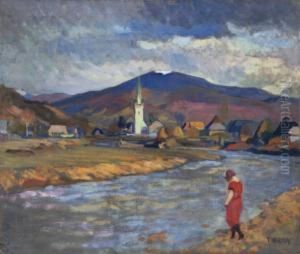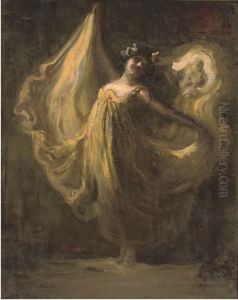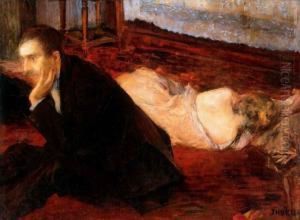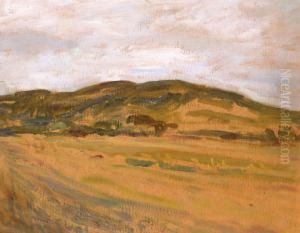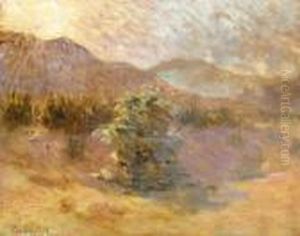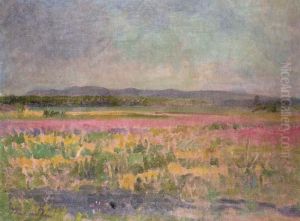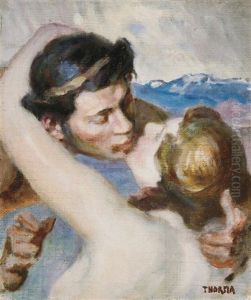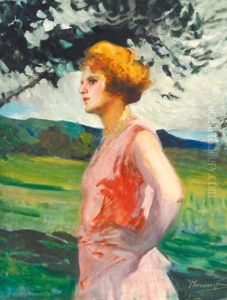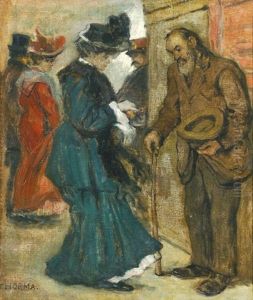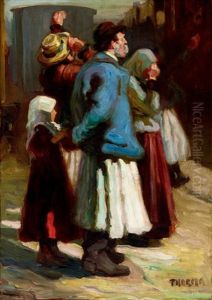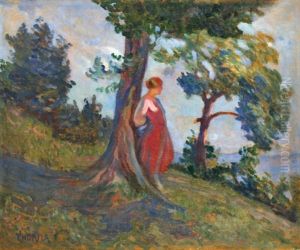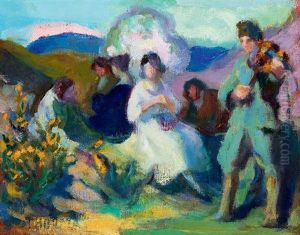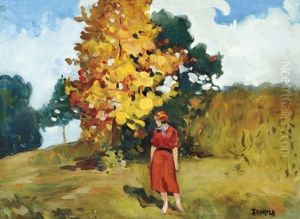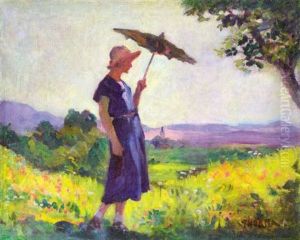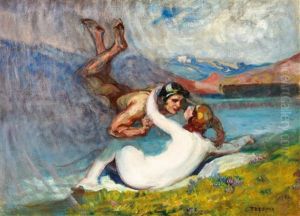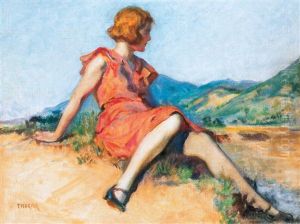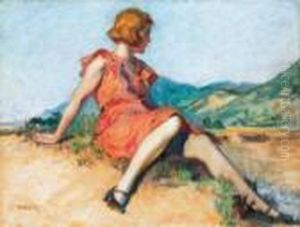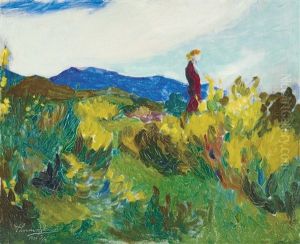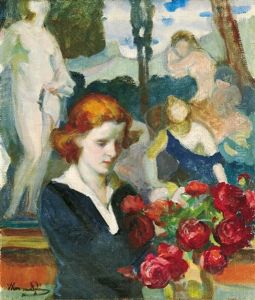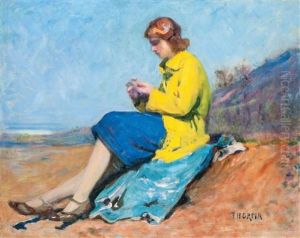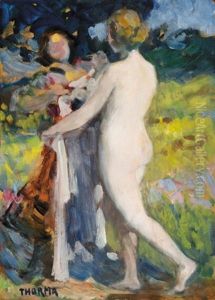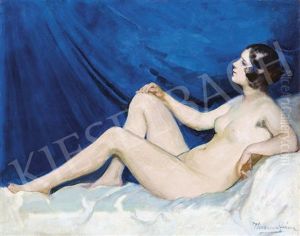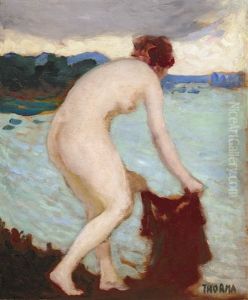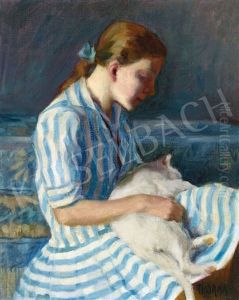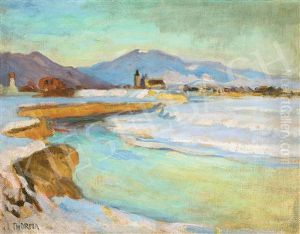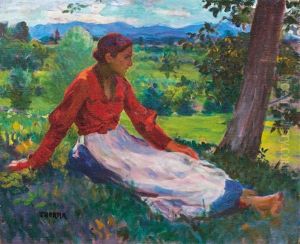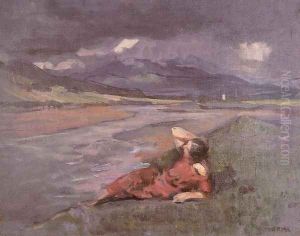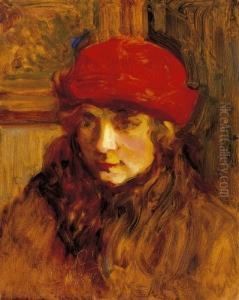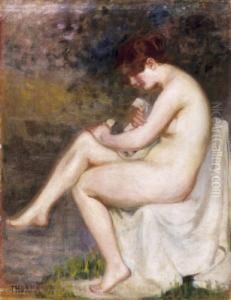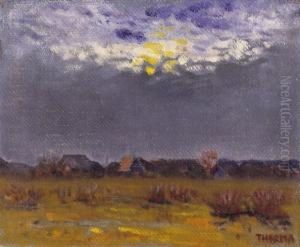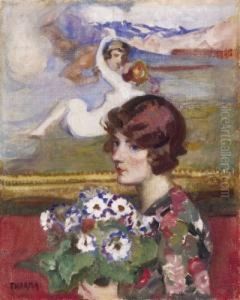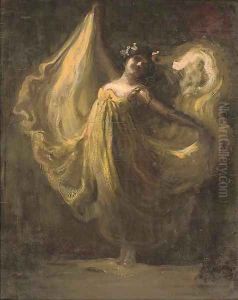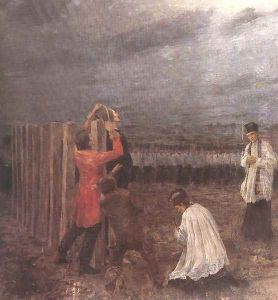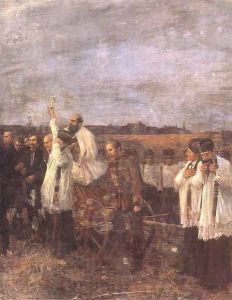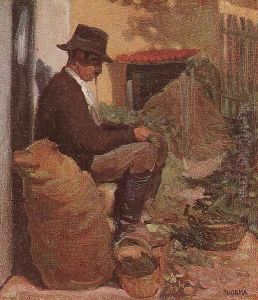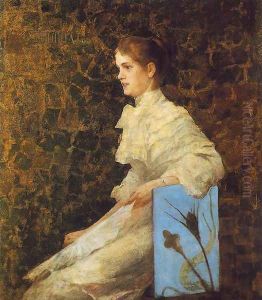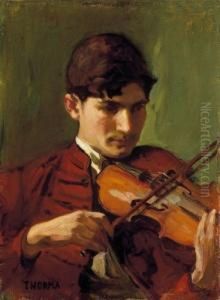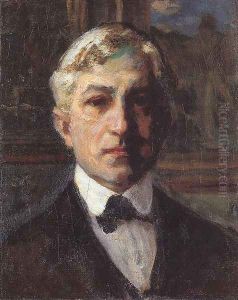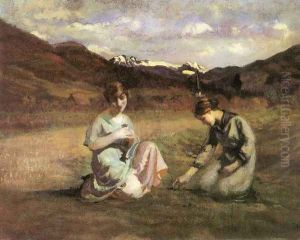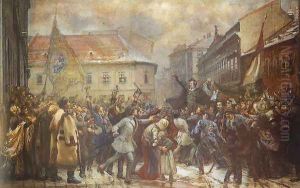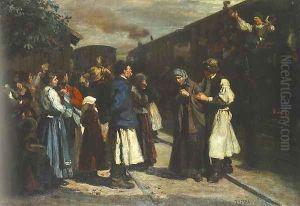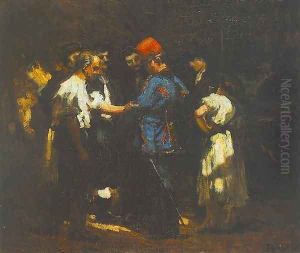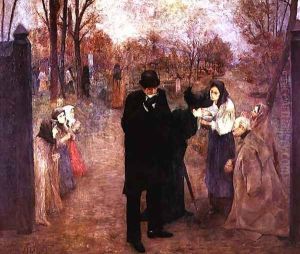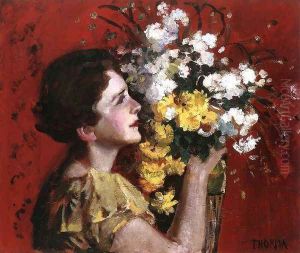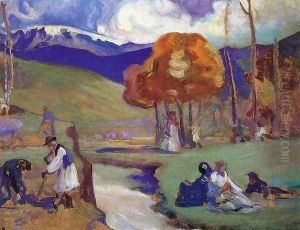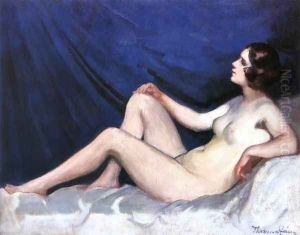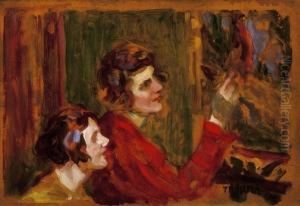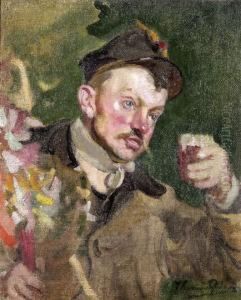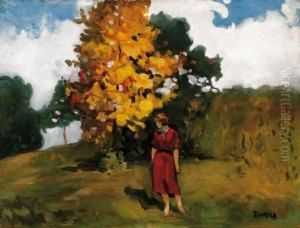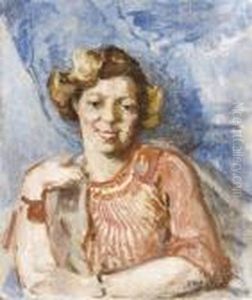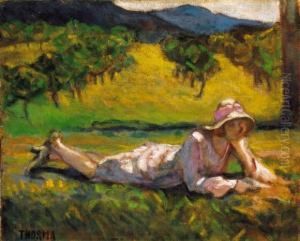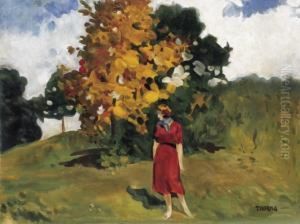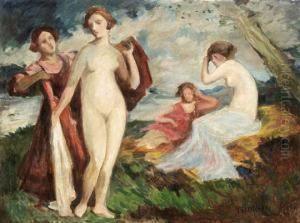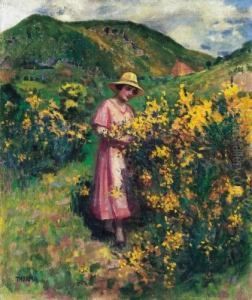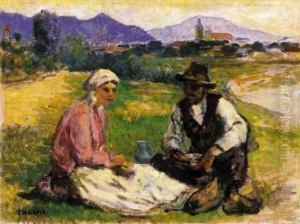Janos Thorma Paintings
János Thorma was a prominent Hungarian painter, born on January 24, 1870, in Kiskunhalas, Hungary. He is often associated with the Nagybánya artists' colony, which he co-founded and which played a significant role in the development of Hungarian modern art. Thorma's early work was influenced by the academic style, but he soon became captivated by plein air painting and naturalism, which defined his later works.
Thorma studied at the Academy of Fine Arts in Munich, where he was influenced by the works of Wilhelm Leibl and the Barbizon school. His initial style was rooted in realism, and after his return to Hungary in 1896, he became deeply involved with the Nagybánya artists' colony, also known as the Baia Mare School. This group of artists was pivotal in introducing plein air painting and impressionist techniques to Hungarian art.
Throughout his career, Thorma's paintings often depicted rural life, Hungarian landscapes, and historical themes. He had a strong interest in capturing the light and atmosphere of the countryside, and his work often featured peasant life and pastoral scenes. His historical paintings were characterized by a dramatic and romantic style, reflecting his nationalistic feelings and interest in Hungary's past.
Between 1902 and 1906, Thorma lived in Paris, which further influenced his artistic development. There, he was exposed to the works of the French Impressionists and Post-Impressionists, which led to an evolution in his use of color and brushwork. Upon his return to Hungary, he continued to be an active member of the Nagybánya artists' colony and participated in numerous exhibitions.
János Thorma was not only a painter but also a teacher and an influential figure in the Hungarian art scene. He served as the director of the Hungarian Royal Drawing School in Nagybánya and later became a professor at the Hungarian University of Fine Arts in Budapest.
Thorma's work received recognition during his lifetime, and he was awarded the title of 'Artist of the Nation' in Hungary. He continued to paint and contribute to the Hungarian art world until his death on December 2, 1937, in Budapest. Today, Thorma is celebrated as one of the key figures of Hungarian art, and his works are held in high regard, with many housed in national galleries and museums across Hungary.
